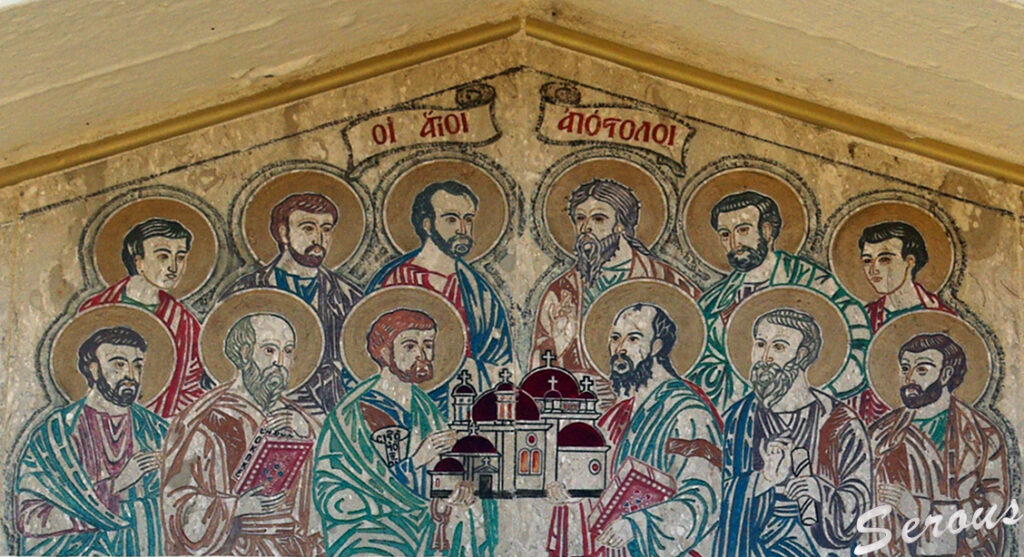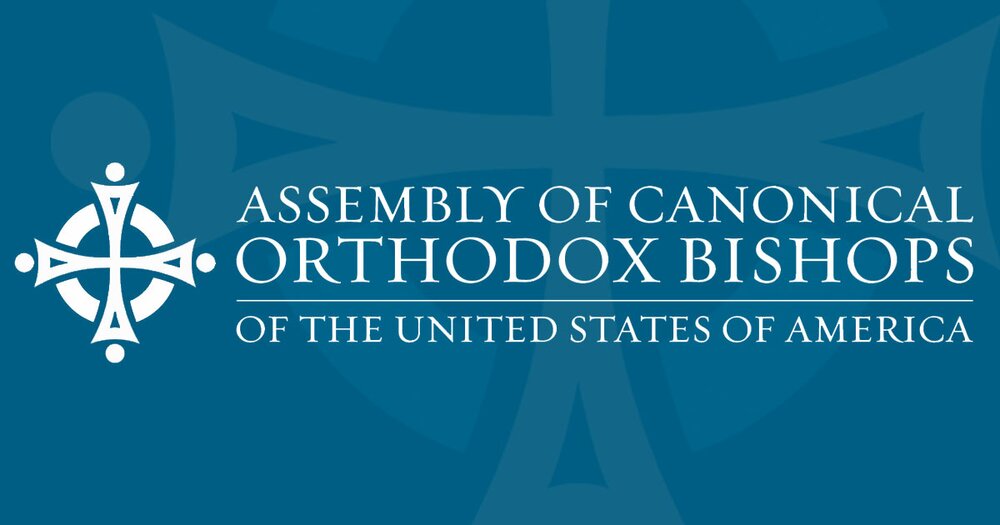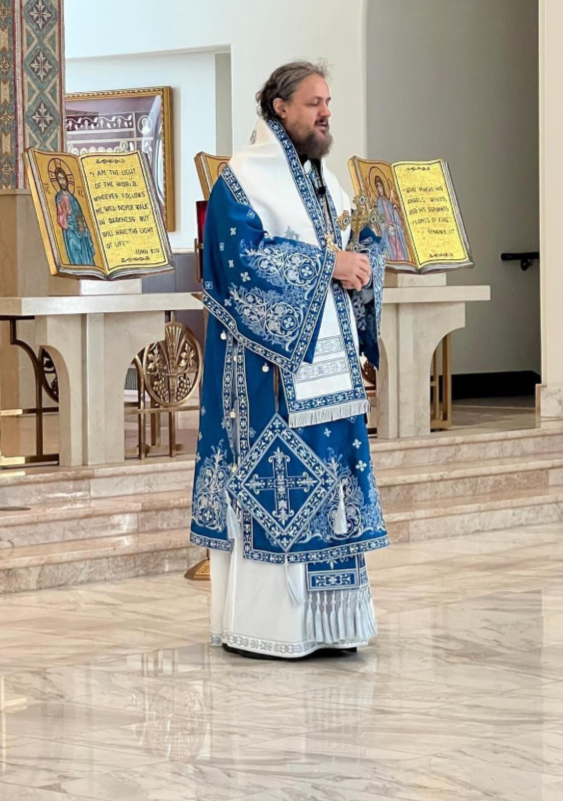The Importance of Apostolic Succession in the Pre-Nicene Era
Apostolic succession, a foundational principle of early Christian ecclesiology, ensured the continuity of apostolic authority and teaching through the orderly transmission from apostles to bishops and presbyters. In the pre-Nicene era (before the First Council of Nicaea in 325 AD), this doctrine did not imply that bishops or presbyters were “apostles” but that they inherited the authority to govern and teach within their local churches. Each local church, termed “catholic” (meaning universal), was considered equal to every other, with its bishop seen as holding the place of St. Peter in his community, symbolizing unity and authority. Presbyters formed a college analogous to the apostolic college, assisting the bishop in governance. Major decisions were made through councils of bishops, each representing their church, emphasizing the conciliar nature of the Church. This article explores the significance of apostolic succession in the pre-Nicene era through extensive quotes from early Church Fathers, including Tertullian, Irenaeus, Cyprian, Ignatius, and Eusebius of Caesarea, and argues that the Orthodox Church today uniquely preserves this model and theology.
Apostolic Succession as Transmission of Authority
The early Church Fathers consistently emphasized apostolic succession as a safeguard for doctrinal purity and ecclesiastical authority. St. Irenaeus of Lyons, writing around 180 AD in *Against Heresies*, articulates the importance of tracing episcopal succession back to the apostles:
“It is within the power of all, therefore, in every Church, who may wish to see the truth, to contemplate clearly the tradition of the apostles manifested throughout the whole world; and we are in a position to reckon up those who were by the apostles instituted bishops in the Churches, and [to demonstrate] the succession of these men to our own times; those who neither taught nor knew of anything like what these [heretics] rave about. For if the apostles had known hidden mysteries, which they were in the habit of imparting to ‘the perfect’ apart and privily from the rest, they would have delivered them especially to those to whom they were also committing the Churches themselves.” (*Against Heresies*, Book III, Chapter 3, Paragraph 1)
Irenaeus further provides a concrete example, listing the bishops of Rome:
“The blessed apostles [Peter and Paul], then, having founded and built up the Church [in Rome], committed into the hands of Linus the office of the episcopate. Of this Linus, Paul makes mention in the Epistles to Timothy. To him succeeded Anacletus; and after him, in the third place from the apostles, Clement was allotted the bishopric.” (*Against Heresies*, Book III, Chapter 3, Paragraph 3)
This succession, Irenaeus argues, ensures that the apostolic tradition remains uncorrupted, as bishops are entrusted with the same teachings as the apostles.
Tertullian, writing around 200 AD in *Prescription Against Heretics*, similarly defends the apostolic churches by their traceable episcopal lineage:
“Let them produce the original records of their churches; let them unfold the roll of their bishops, running down in due succession from the beginning in such a manner that [that first bishop of theirs] shall be able to show for his ordainer and predecessor some one of the apostles or of apostolic men—a man, moreover, who continued steadfast with the apostles. For this is the manner in which the apostolic churches transmit their registers: as the church of Smyrna, which records that Polycarp was placed therein by John; as also the church of Rome, which makes Clement to have been ordained in like manner by Peter. In exactly the same way the other churches likewise exhibit [their several worthies], whom, as having been appointed to their episcopal places by apostles, they regard as transmitters of the apostolic seed.” (*Prescription Against Heretics*, Chapter 32)
Tertullian challenges heretics to demonstrate their own succession, knowing their inability to do so underscores the legitimacy of the apostolic churches. He further emphasizes the unity of doctrine preserved through succession:
“From this, therefore, do we draw up our rule. Since the Lord Jesus Christ sent the apostles to preach, (our rule is) that no others ought to be received as preachers than those whom Christ appointed; for ‘no man knoweth the Father save the Son, and he to whomsoever the Son will reveal Him.’ Nor does the Son seem to have revealed Him to any other than the apostles, whom He sent forth to preach. … If, then, these things are so, it is in the same degree manifest that all doctrine which agrees with the apostolic churches—those moulds and original sources of the faith—must be reckoned for truth, as undoubtedly containing that which the (said) churches received from the apostles, the apostles from Christ, Christ from God.” (*Prescription Against Heretics*, Chapter 21)
Eusebius of Caesarea, writing in the early 4th century in his *Church History*, provides historical documentation of apostolic succession across various churches. He records the succession in Jerusalem:
“After the martyrdom of James and the conquest of Jerusalem which immediately followed, it is said that those of the apostles and disciples of the Lord that were still living came together from all directions with those that were related to the Lord according to the flesh … to take counsel concerning the successor to be chosen in place of James. They all with one consent pronounced Symeon, the son of Clopas, … to be worthy of the episcopal throne of that church. He was a cousin, as they say, of the Saviour.” (*Church History*, Book III, Chapter 11)
Eusebius also details the succession in Antioch, noting:
“Evodius, having been established the first [bishop] of the Antiochians, Ignatius succeeded him, who is celebrated even now in the church of the Antiochians, as the second in the succession of their bishops.” (*Church History*, Book III, Chapter 22)
These accounts illustrate the early Church’s meticulous record-keeping of episcopal successions, reinforcing the importance of continuity from apostolic times.
The Bishop as Holding the Place of Peter
St. Cyprian of Carthage, writing around 251 AD in *On the Unity of the Church*, articulates the theology that each bishop holds the place of St. Peter in his local church, symbolizing unity and authority:
“And although to all the apostles, after His resurrection, He gives an equal power, and says, ‘As the Father hath sent me, even so send I you,’ yet, that He might set forth unity, He arranged by His authority the origin of that unity, as beginning from one. Assuredly the rest of the apostles were also the same as was Peter, endowed with a like partnership both of honour and power; but the beginning proceeds from unity. And the primacy is given to Peter, that there might be shown one Church and one chair. … If a man does not hold fast this unity of Peter, does he imagine that he still holds the faith? If he desert the chair of Peter upon whom the Church was built, can he still be confident that he is in the Church?” (*On the Unity of the Church*, Paragraph 4)
Cyprian’s theology does not elevate one bishop above others but sees each bishop as embodying Peter’s role locally, ensuring the unity of the Church through shared apostolic authority. He further elaborates in his *Letters*:
“Our Lord, whose precepts and admonitions we ought to observe, describing the honour of a bishop and the order of His Church, speaks in the Gospel, and says to Peter: ‘I say unto thee, That thou art Peter, and upon this rock I will build my Church.’ … Thence, through the changes of times and successions, the ordering of bishops and the plan of the Church flow onwards; so that the Church is founded upon the bishops, and every act of the Church is controlled by these same rulers.” (*Letter 26*, Paragraph 1)
Cyprian’s view underscores that the episcopate, as a whole, inherits Peter’s role, with each bishop presiding over his local “catholic” church as a successor to the apostles.
The Presbyters as a College
The presbyters, assisting the bishop, were understood to form a college corresponding to the apostolic college. St. Ignatius of Antioch, writing around 107 AD, emphasizes the collaborative role of bishop and presbyters:
“In like manner, let all reverence the deacons as an appointment of Jesus Christ, and the bishop as Jesus Christ, who is the Son of the Father, and the presbyters as the sanhedrim of God, and assembly of the apostles. Apart from these, there is no Church.” (*Letter to the Trallians*, Chapter 3)
Ignatius compares the presbyters to the apostles, highlighting their collective role in church governance under the bishop’s leadership. This structure ensured that the local church operated as a unified body, reflecting the apostolic model.
Equality of Local Catholic Churches
Every local church in the pre-Nicene era was called “catholic,” signifying its full participation in the universal Church. Ignatius of Antioch, in his *Letter to the Smyrnaeans*, writes:
“Wherever the bishop shall appear, there let the multitude [of the people] also be; even as, wherever Jesus Christ is, there is the Catholic Church.” (*Letter to the Smyrnaeans*, Chapter 8)
This statement equates the presence of the bishop with the catholicity of the church, affirming that each local church is a complete expression of the universal Church. Eusebius reinforces this by describing the interconnectedness of churches through their bishops, noting how they communicated and recognized each other’s authority (* Combining information from *Church History*, Books III-IV). The equality of churches meant no single church, including Rome, held jurisdictional supremacy in the pre-Nicene period; instead, they were bound by mutual respect and shared faith.
The Role of Conciliar Decision-Making
Councils of bishops were essential for resolving disputes and maintaining unity, with each bishop representing his church. Cyprian, in his *Letters*, stresses the equality of bishops and the necessity of conciliar decisions:
“For neither does any of us set himself up as a bishop of bishops, nor by tyrannical terror does any compel his colleague to the necessity of obedience; since every bishop, according to the allowance of his liberty and power, has his own proper right of judgment, and can no more be judged by another than he himself can judge another. But let us all wait for the judgment of our Lord Jesus Christ, who is the only one that has the power both of preferring us in the government of His Church, and of judging us in our conduct there.” (*Letter 55*, Paragraph 21)
Cyprian’s leadership at the Council of Carthage (256 AD) exemplifies this, where bishops debated the rebaptism of heretics and reached a consensus through discussion. Eusebius records earlier instances of synods, such as those addressing the Montanist controversy:
“There are extant also writings of these men [bishops], who held synods at that time in the various provinces, in which they set forth clearly the traditions of the orthodox faith, as they had received them from the successors of the apostles.” (*Church History*, Book V, Chapter 16)
These councils demonstrate the pre-Nicene commitment to conciliarity, ensuring that no single bishop could impose his will on the Church.
Preservation in the Orthodox Church
The Orthodox Church today is widely recognized for preserving the pre-Nicene model of apostolic succession, ecclesiology, and conciliarity. Each Orthodox bishop traces his ordination to the apostles, maintaining the continuity of faith and practice. The Orthodox Church continues to call each local church “catholic,” reflecting its full participation in the universal Church. Bishops remain equal, with no single bishop holding universal jurisdiction, and major decisions are made through synods, such as the Holy and Great Council of Crete in 2016.
In contrast, the Roman Catholic Church, since the First Vatican Council (1870), has emphasized the universal primacy of the Pope, a development absent in the pre-Nicene era. Protestant denominations often lack formal apostolic succession, prioritizing scripture or congregational governance. The Orthodox Church’s adherence to the conciliar model, the equality of bishops, and the college of presbyters aligns closely with the practices described by Irenaeus, Tertullian, Cyprian, Ignatius, and Eusebius.
Conclusion
Apostolic succession in the pre-Nicene era was a vital mechanism for preserving the apostolic faith and authority. Through the writings of Irenaeus, Tertullian, Cyprian, Ignatius, and Eusebius, we see a consistent theology: bishops inherited apostolic authority, each holding the place of Peter in their local catholic church, with presbyters forming a college akin to the apostles. The equality of churches and conciliar decision-making ensured unity without domination. The Orthodox Church today stands as the primary inheritor of this model, maintaining the structure and theology of the early Church in its episcopal succession, conciliar governance, and understanding of the catholicity of each local church. This continuity underscores the enduring significance of apostolic succession as a foundation for Christian unity and fidelity to the apostolic tradition.
Note: All quotes are sourced from standard translations in the *Ante-Nicene Fathers* series and Eusebius’ *Church History* (Nicene and Post-Nicene Fathers, Series II), ensuring accuracy and accessibility.





